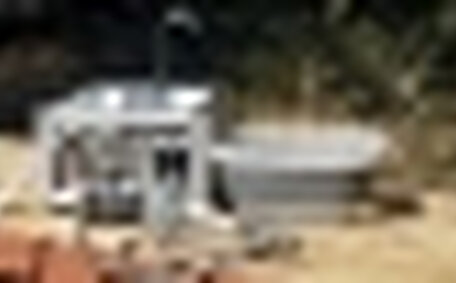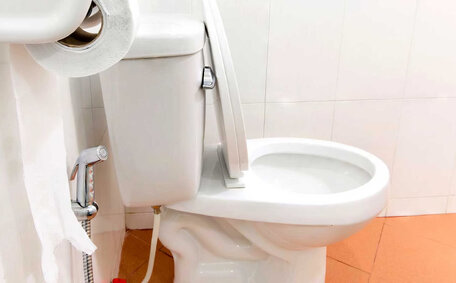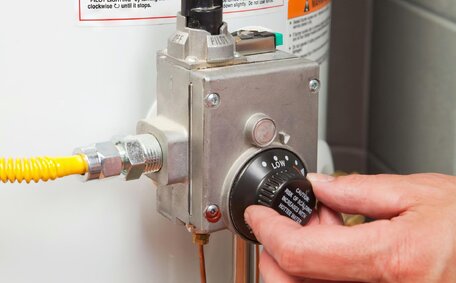Introduction: Is It Safe to Use a Gas Stove During a Power Outage?
Many households are concerned about the use of gas stoves and gas water heaters during power outages.
Although traditional gas appliances can operate without electricity, modern versions may have safety features that prevent use during a power outage.
The goal is to provide straightforward guidance to maintain safety and avoid misconceptions around operating natural gas appliances when the electricity is out. Equipped with the right knowledge and preparation, you can securely cook meals on your gas stove during a power outage.
How Modern Gas Stoves Work and Their Limitations Without Electricity
Many modern gas stoves are equipped with electric ignition systems to light surface burners instead of a standing pilot light. This necessitates electricity to power the igniter and thus authorise the use of your appliance’s burners. With the power out, safety features will inhibit you from being able to use the stove’s gas supply.
While certain stoves offer a battery backup to temporarily maintain ignition during an outage, most modern stoves cannot operate without electricity.
Some models feature manual ignition burners as a backup; however, this does come with the risk of leaks or accidental fires.
The oven portion of a gas stove will generally require power for controlling the gas valves, regulating temperatures, and running the internal fans. Do not attempt to use a gas oven without power.
Overall, electric ignition systems and safety features mean most modern gas stoves will not function during a power outage. Although manual operation is possible with some burners, it carries risks. Using alternative non-gas cooking methods is a safer option during an electrical outage.
Safety Precautions When Manually Lighting a Gas Stove
Manually lighting gas burners on a stove without power can be dangerous if you do not use your due diligence to take proper precautions. Here are some important safety steps to follow:
- Make sure all stove knobs are turned to the off position before attempting to light any burner.
- Check for gas leaks by smelling around the stove and listening carefully for any hissing sound. If you suspect a leak, do not light the stove and contact your local gas service provider immediately.
- Have a working fire extinguisher available in case power issues lead to accidental flames.
- Use long matches or a butane barbecue lighter to avoid having your hands near the burner.
- Keep your focus as you turn the knob to light while holding the igniter source to the burner. Turn the knob immediately if it does not light in less than a few seconds to avoid gas buildup.
- Make sure burner flames burn evenly without sputtering once lit. If not, turn off the gas and have a professional inspect for issues.
- Never leave lit burners unattended. Extinguish them after cooking and close the gas valve.
- Ensure the kitchen is properly ventilated to avoid carbon monoxide buildup.
Consider manual operation of appliances during power outages only as a last resort, prioritising safety and seeking alternative cooking methods where possible.
Ventilation and Preventing Carbon Monoxide Poisoning
During a power outage, remember proper ventilation when using gas appliances to prevent carbon monoxide from accumulating indoors without the help of electricity-powered ventilation or air circulation systems.
Initial carbon monoxide poisoning symptoms resemble the flu with headaches, dizziness, nausea, fatigue, and shortness of breath. Prolonged exposure can lead to unconsciousness, brain damage, and even death. Children, pregnant women, the elderly, and those with heart or lung conditions are most at risk.
Ensure that windows are open for adequate ventilation if you must cook on a gas stove without power. Never bring outdoor gas grills or camping stoves inside for cooking, as these release high levels of carbon monoxide.
Regularly check your battery-operated carbon monoxide detectors and replace batteries and sensors at least every 5-7 years. Treat these checks as regularly as you would charging your phone. If an alarm sounds, leave the house immediately and call emergency services.
Alternative Cooking Methods to Consider During an Outage
Outdoor grills are a great option for cooking without power. Charcoal grills provide medium heat that is suitable for most cooking tasks. Propane grills are easy to ignite and quick to heat up, though propane tank capacity should be considered.
Camp Stoves
When using dual fuel camp stoves indoors, which run on either propane or butane, ensure there is ample ventilation. These stoves offer controlled heat suitable for boiling water or simmering dishes.
Fire Pits or Fireplaces
Cooking over an outdoor wood fire is possible but can be challenging to regulate heat and avoid smoke. Although not advisable for cooking, your fireplace can provide ambient heat in case of venting problems.
Electric Hot Plates
Electric hot plates can be powered by propane canisters or car batteries with DC inverters for a convenient, off-grid cooking solution.
Solar Ovens
Solar ovens present a unique, zero-fuel cooking option during sunny weather, capable of baking, roasting, and stewing food albeit at a slower pace.
The best approach depends on the weather, length of the outage, and what equipment you have on hand. At times, consuming pre-stored frozen meals may be a safer option than using gas appliances until electricity is restored.
How to Evaluate Your Gas Appliances’ Capabilities Without Power
When the power goes out, having the know-how to use gas appliances that will continue to function is invaluable. Here are some tips on evaluating their capabilities:
Stoves
Check if your modern gas stove’s electronic ignition can use battery backup or if manual knobs provide a way to engage pilot lights without power; see if the burners can be lit with a match.
Water Heaters
Fireplaces & Space Heaters
Direct vent and natural draught gas fireplaces should function with manual lighting. Older space heaters without thermostat or fan controls will also work.
Clothes Dryers
Most gas dryers require electricity for controls and fans and won’t work during power outages. Some models with mechanical timer knobs may allow air drying.
Safety First
When using gas appliances without power, vigilantly check for gas leaks, ensure good ventilation, and monitor carbon monoxide detectors. Due to increased risks, resort to manual operation only when necessary, and be aware of your appliances’ limitations.
What To Do When Power is Restored After Using Gas Appliances
- Check that all stove burners and oven pilots are extinguished before turning power back on. This prevents gas flow with no ignition source.
- Thoroughly inspect gas lines and appliances for leaks. Do this by smell and listening for hissing sounds with the gas on. Fix any leaks before further use.
- For your water heater specifically, confirm the pilot light has stayed lit. Relight it if needed and let the water heater fully heat up before use.
- Reset any tripped circuit breakers related to the appliances.
- Sequentially test each appliance. For stoves, confirm each burner ignites, and for ovens, verify it attains the desired temperature.
- If appliances do not operate properly, shut off gas supply lines and call for service. A professional can inspect for issues like thermocouple or igniter failure.
- Check carbon monoxide detectors and ventilate rooms previously used for cooking during the outage.
- Consider having appliances inspected by a licenced professional like a plumber or HVAC technician as a safety precaution after prolonged manual operation.
Taking these precautions when power returns can protect your home from potential fires or gas leaks that might have resulted from damage to appliances during the outage.






